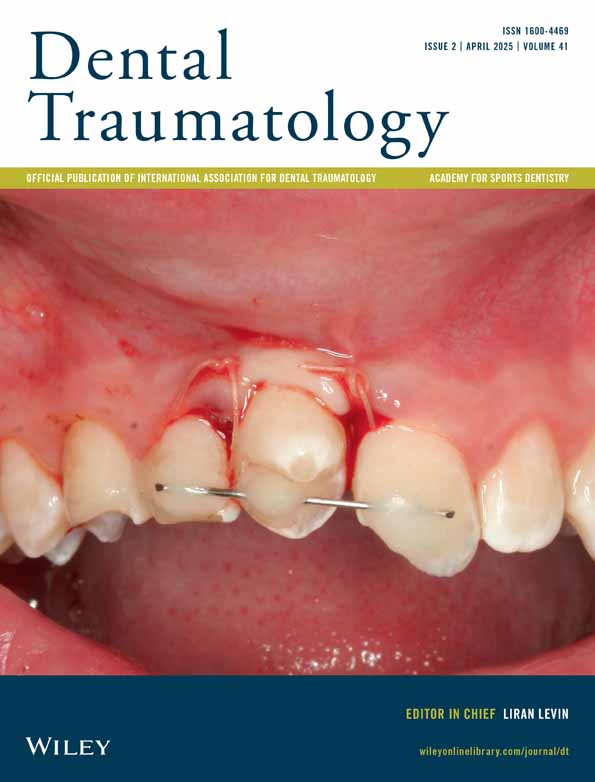Stress Distribution in Traumatized Teeth Splinted With Fiber Localizing on Incisal/Cervical Positions: A Three-Dimensional Finite Element Analysis
Qian-wen Ding and Hongjia Yang are co-first authors of the manuscript.
Funding: This study was supported by grants from the National Nature Science Foundation of China (Nos. 81100765, 81570990).
ABSTRACT
Background/Aim
The fiber splint represents an advanced treatment for traumatized dental injuries. The complete understanding of the localization of a splint on traumatized teeth remains elusive. The aim of this study was to assess the impact of the incisal/cervical positions of the fiber splint on the stress distribution of traumatized dental roots in various occlusal relationships.
Materials and Methods
Three-dimensional finite element models were generated based on a cone beam computer tomogram of a patient. The incisal and cervical splints were simulated by strips that were bonded close to the incisal/cervical labial surface of traumatic teeth. Force was loaded on the incisal ridge, incisal and cervical positions on the palatal surface of each tooth to simulate the conditions of traumatized teeth during mastication. The equivalent stress (von Mises) on the traumatic teeth and abutment teeth was calculated by Ansys software (version 2021, R1).
Results
The incisal splint effectively transferred the stress from the traumatized tooth roots to the abutment teeth when force was loaded on the incisal ridge and incisal and cervical positions on the palatal surface. Nevertheless, the reduction effect was notably diminished when the cervical splint was used. Notably, in cases of cervical splints, with a loading force on the incisal ridge, there is an increase in stress on the roots of traumatized teeth, which poses a disadvantage in the management of traumatic dental injuries.
Conclusion
The incisal splint demonstrated a more effective transfer of stress from the roots of the traumatic teeth to the abutment teeth than the cervical splint and the raw.
Conflicts of Interest
The authors declare no conflicts of interest.
Open Research
Data Availability Statement
The data that support the findings of this study are available from the corresponding author upon reasonable request.




